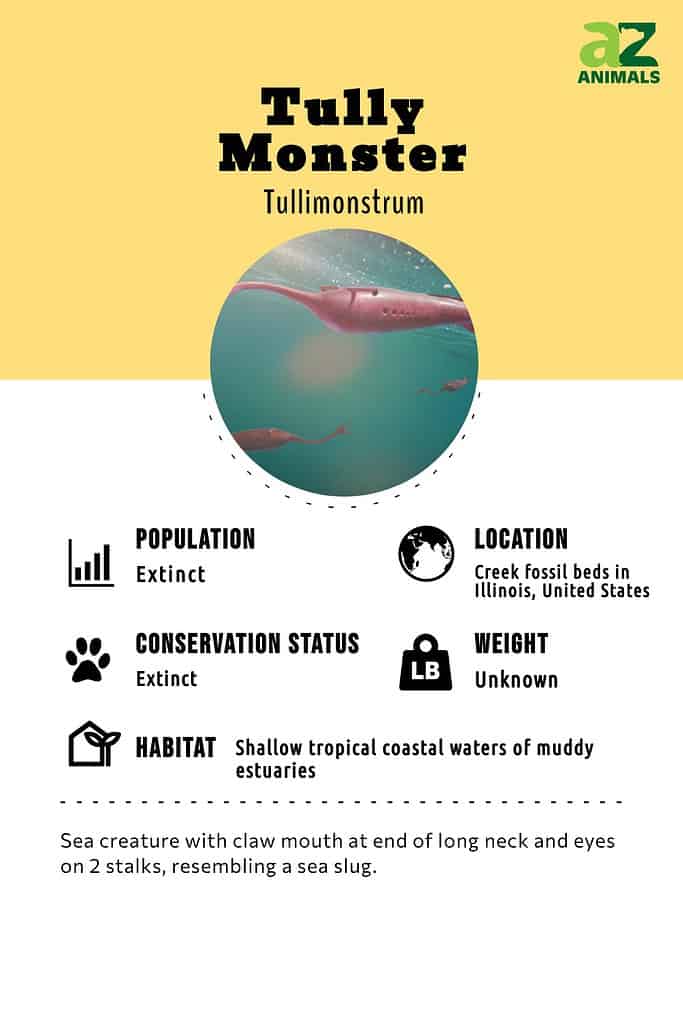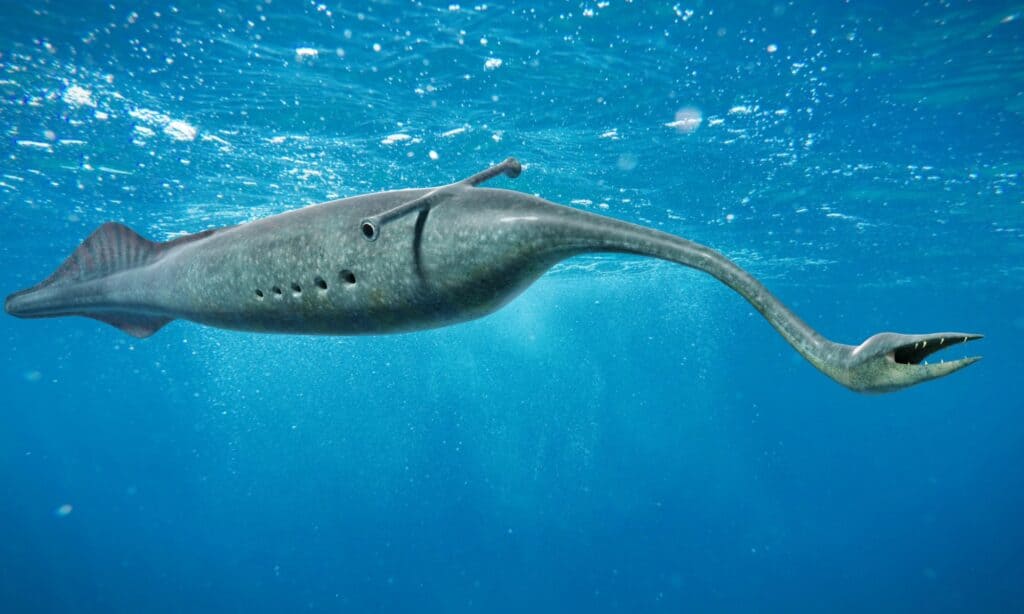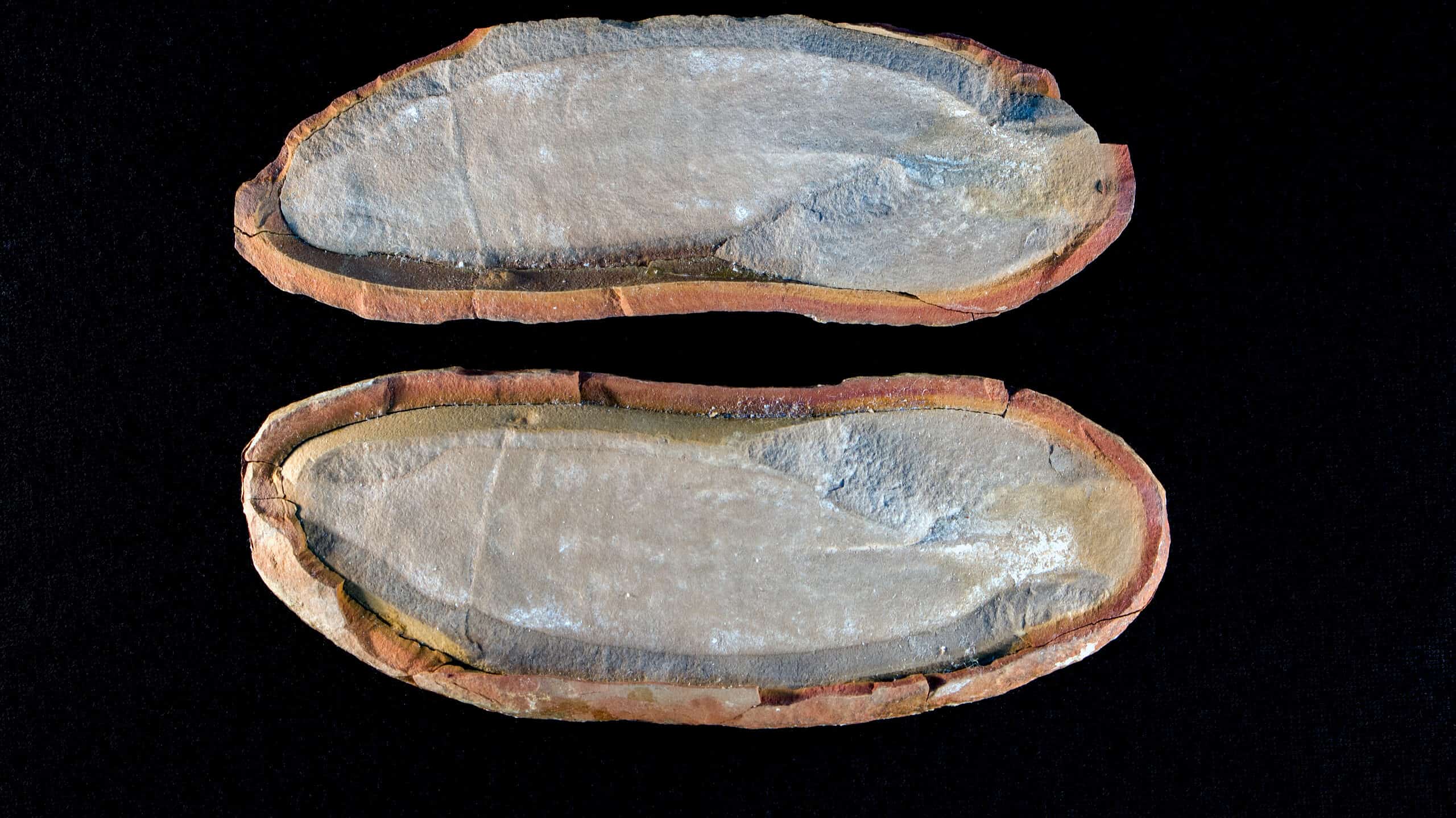Tully Monster
Tullimonstrum gregarium
Tully Monsters can neither be classified as vertebrates nor invertebrates due to their ambiguous body structure.
Advertisement
Tully Monster Scientific Classification
- Kingdom
- Animalia
- Phylum
- Chordata
- Genus
- Tullimonstrum
- Scientific Name
- Tullimonstrum gregarium
Read our Complete Guide to Classification of Animals.
Tully Monster Conservation Status
Tully Monster Facts
- Fun Fact
- Tully Monsters can neither be classified as vertebrates nor invertebrates due to their ambiguous body structure.
- Most Distinctive Feature
- Long snout with claw-shaped jaw
- Habitat
- Shallow coastal waters of muddy estuaries
View all of the Tully Monster images!
The Tullimonstrum is more commonly known as the Tully monster or Tully’s monster. Its remains have only been found in Illinois in the United States. This relatively small creature resembled a lamprey and was a water dweller.
Description And Size
According to the fossil discovered, the following are the only physical attributes known to the scientific community.
- Its size was quite small. The length of the Tullimonstrum was around 14 inches long in an adult. But in the smaller-sized Tullimonstrum, the length reached only 3 inches.
- The jaw of the Tullimonstrum was at the end, held together by a long snout and a proboscis. The proboscis was a small claw-type structure, like an appendage of modern-day invertebrates. A total of 8 small yet sharp teeth were found lining both jaws.
- Pairs of vertical ventral fins were found at the base of the body. But it is assumed due to the structure of the remains found since the fins did not now exist as part of the fossil.
- Its body was segmented, soft-bodied, long, and narrowed down from both ends of the body. It also did not carry any hard shell or protective covering on its body.
- An interesting thing is that there is no hard part in the fossil. Hence, it can be assumed that there is no organ made up of bone, chitin, or calcium carbonate. Normally, they form the hard structures found in most animals.
- Its body resembled that of a long slug, but it could not be classified into any proper group of either invertebrates or vertebrates.
- Its eyes consisted of pigment granules known as melanosomes. But they come out from both ends of long and slender, stick-shaped body parts. This slender part comes out of opposite ends of the body, resembling the structure of an “alien.”

Diet
There are a lot of things that remain a mystery when it comes to the Tully monster. One of those things includes its diet. Scientists believe that the Tully monster lived with a bunch of different aquatic animals like sharks, shrimps, jellyfish, horseshoe crabs, and various other amphibians.
But the thing they are unsure about is what it ate. There is no clue of the kind of prey it used to hunt. Scientists are not even sure whether the Tully monster was a predator or a scavenger.
One fact that does make it easier to study its potential diet is its way of eating. The eyes must have been used to capture a sideways image of its atmosphere too. Apart from that, its long snout with the claw-shaped jaw must have helped the Tully monster in scraping and biting off the flesh of its prey.
But then again, it cannot be said whether it used to munch on vegetables or it favored the meat or carcasses within the ocean.
Habitat
The Tully monster existed 300 million years ago on Earth. It lived in the Pennsylvanian geological period and the Carboniferous Period. Its fossils were found in Illinois, United States.
Considering the place where its fossil was discovered, the Tully monster favored the shallow tropical coastal waters of muddy estuaries as part of its habitat. Apart from that, it was known to co-exist with various marine animals like sharks, shrimp, and even jellyfish.
Is It A Vertebrate Or An Invertebrate?

The Tully monster resembled a lamprey and lived in the water.
©iStock.com/dottedhippo
The behavior of the Tully monster is unknown, due to the mere reason that it has not yet been classified. But one thing that did become concrete over time is that the characteristics of the Tully monster resembled that of a Lamprey. It was smart like one and could survive in the ocean with its equipped brain and sense of smell.
Scientists are unable to determine whether to group the Tully monster as a vertebrate or as an invertebrate. The reason is simple, its body structure and the fossil remains have left the researchers perplexed.
It does not have any backbone so it could not come into the group of the vertebrates like birds, mammals, fishes, and reptiles. But the mystery of its classification is not solved up till now because it does not act like an invertebrate either.
One study showed that the pigments called melanosomes had a higher ratio of zinc to copper in the Tully monster. This ratio showed that it was similar to the ratio found in various invertebrates.
But there was one contradiction in this assumption, the copper found in the Tully monster was not the same as the one that is present in invertebrates. Hence, it could neither classify as a vertebrate nor as an invertebrate.
Now the mystery of the backbone comes back into focus when you take a close look at its fossil. There is a light-colored band that runs from one end of the body to the other in a vertical position.
While many scientists regarded it as a digestive tract, others gave it the name of the rudimentary spinal cord. Such a rubbery tube is often found in primitive vertebrates. Finally, recent studies have revealed that the Tully Monster had a primitive spinal cord and was in fact a vertebrate.
Threats And Predators
The predators of the Tully monster are unknown. But one thing that can be made certain is the fact that it might have been a great predator. Considering its average intelligence, sense of smell, long mouth carrying a claw-shaped jaw, 360 degrees of vision, and long eye view, it could have been a competition for any creature in the sea.
Nonetheless, the Tully monster was quite small. It probably had a few large predators around that must not have had a hard time hunting it. But then again, these are all assumptions.
Discoveries and Fossils – Where It was Found

Fossil of the creature nicknamed “the Tully monster” – it was an invertebrate or possibly a vertebrate marine animal that hunted other marine animals.
©Kimberly Boyles/Shutterstock.com
The only fossil of the Tully monster is found in Illinois, United States. It was discovered in 1958 by a scientist who was on an exploration to find various fossils. He stumbled upon dozens of Tully monsters on the rocks of Mazon Creek in Illinois.
From the moment it was captured, it has left scientists confused. Even though more than 1200 specimens have been found to date, scientists have been unable to classify the organism. In 1966, it was given a proper name known as the Tullimonstrum gregarium. The unique part about this fossil is not just its structure but also that it does not exist anywhere else in the world.
However, a more pressing question does arise though, if it does not have a skeleton, how has it been preserved all these years?
The story of the Tully monster resembles that of many soft-bodied animals. The fine details on their fossils are enough to help us outline the organism’s structure.
A soft-bodied animal usually does not usually last long. It is either eaten up by scavengers or decomposes in the ground. But some of these animals died so quickly that they were buried under the mud.
As a result, hundreds of feet below sea level, chemical activity rises. A mixture of seawater, mud, and organic matter of dead animals and plants combine to form ironstone. This hardened structure does not preserve the flesh of the organisms but is enough to outline the fine details of the Tully monster’s structure.
Extinction – When Did It Die Out?
The exact cause of the extinction is unknown. But only a single species of the Tully monster is known today. It died over 300 million years ago and remains a mystery to the scientific community.
Similar Animals To The Tully Monster
- Opabinia regalis – It had stalked eyes like that of a Tully monster, along with a proboscis, and flexible fins. But its proboscis was flexible and it existed around 200 million years ago on the Earth.
- Lamprey — Perhaps similar in large part due to appearance, this creature is also referred to as a vampire fish.
Tully Monster FAQs (Frequently Asked Questions)
What is Tully Monster related to?
Was the Tully Monster a vertabrate or invertabrate?
Recent studies have concluded that the Tully Monster was indeed a vertebrate with a primitive spinal cord.
Thank you for reading! Have some feedback for us? Contact the AZ Animals editorial team.
Sources
- Earth Sky, Available here: https://earthsky.org/earth/tully-monster-mystery-fossil-invertebrate-vertebrate/
- Wikipedia, Available here: https://en.wikipedia.org/wiki/Tullimonstrum
- Everything Dinosaur, Available here: https://blog.everythingdinosaur.co.uk/blog/_archives/2017/02/21/the-tully-monster-just-lost-its-backbone.html
- The Conversation, Available here: https://theconversation.com/the-mysterious-tully-monster-fossil-just-got-more-mysterious-126531

















